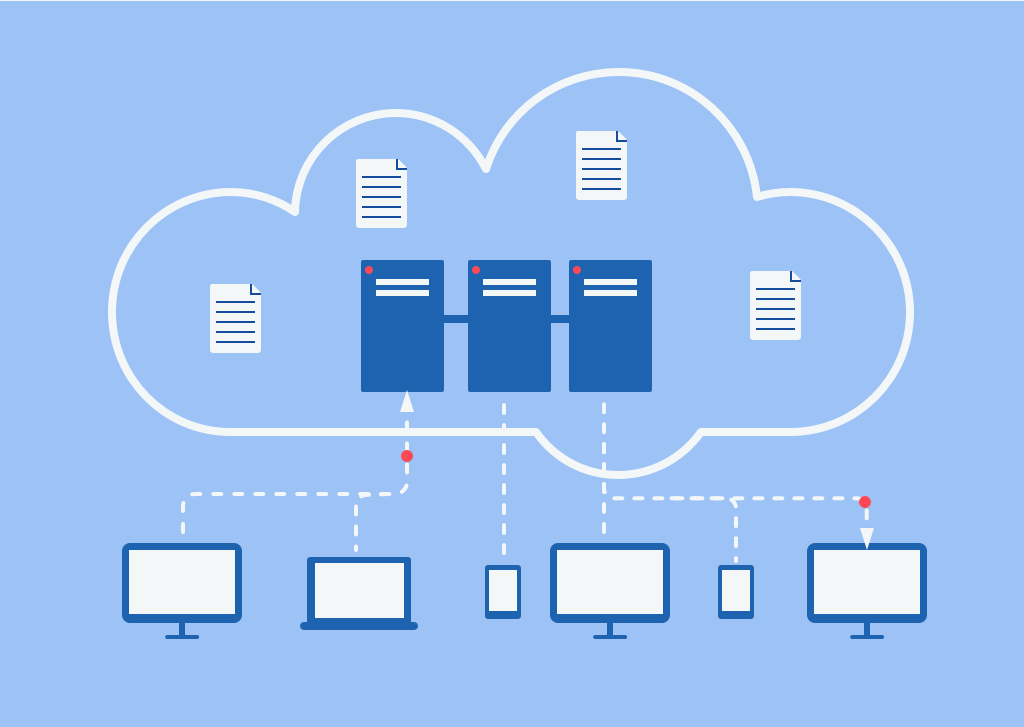LinkDaddy Universal Cloud Storage Launches New Solution Characteristics
Achieve Seamless Integration With Universal Cloud Provider
In the fast-paced landscape of modern service operations, the pursuit for smooth combination with universal cloud solutions sticks out as a crucial part for attaining business performance and competition. The capability to seamlessly attach diverse systems, applications, and information resources throughout cloud platforms can dramatically influence a company's agility and responsiveness to altering market demands. By exploring the elaborate interplay between cloud solutions and combination approaches, organizations can unlock a realm of possibilities to enhance process, improve cooperation, and drive advancement. Nonetheless, the course to achieving real combination quality calls for a deep understanding of the intricacies entailed and a critical strategy to taking advantage of the full capacity of cloud technologies.
Benefits of Universal Cloud Services
Universal Cloud Solutions use a myriad of benefits for organizations looking for scalable and effective options for their diverse digital needs. One essential benefit is cost-effectiveness. By utilizing cloud services, businesses can avoid the high costs related to buying and maintaining physical servers. Rather, they can select a pay-as-you-go design, just spending for the resources they make use of. This flexibility permits firms to scale their operations up or down based upon demand, enhancing their investing.
An additional benefit of Universal Cloud Services is boosted adaptability and access. With cloud solutions, employees can access data and applications from anywhere with an internet link, allowing remote job and enhancing productivity. This ease of access likewise fosters collaboration among staff member, despite their physical area.
In addition, cloud solutions offer robust safety features, protecting sensitive company information from prospective dangers. Company buy advanced safety measures, such as file encryption and normal data backups, to make certain the integrity and discretion of information saved in the cloud. This degree of safety offers assurance for businesses managing sensitive data and regulatory conformity needs.
Trick Attributes for Combination Success
Carrying out successful assimilation of cloud services calls for a calculated emphasis on essential attributes that improve operations and enhance efficiency. One vital attribute is durable compatibility. Guaranteeing that the cloud solutions being incorporated work with existing systems and applications is vital for smooth information flow and performance. Scalability is another vital attribute. The integrated cloud services should have the ability to range easily to suit altering service demands, whether it's an increase in data quantity or customer traffic. Protection is critical. Implementing solid protection measures such as encryption, gain access to controls, and regular audits is important to shield sensitive data and keep compliance.
Moreover, automation capacities play a substantial duty in combination success. Automation simplifies processes, lowers hand-operated errors, and enhances effectiveness. Real-time data synchronization is also vital. The ability to synchronize information across integrated cloud services quickly makes sure that details is precise and constantly up-to-date. Tracking and analytics features are important for tracking efficiency, identifying concerns, and maximizing the incorporated cloud solutions for peak effectiveness. By concentrating on these key features, organizations can attain successful combination of global cloud solutions.
Ideal Practices for Execution
To guarantee the successful integration of cloud services, adhering to ideal methods for application is essential. First of all, complete preparation is necessary. Clearly define the objectives of the assimilation, determine the certain cloud solutions needed, and establish a timeline for implementation. Engage appropriate stakeholders early on to collect their needs and make certain positioning with company objectives.
Second of all, choosing Discover More the ideal cloud provider is vital. Examine potential suppliers based on their reputation, security measures, scalability, and compatibility with your existing systems. Performing detailed research and looking for suggestions can help in making an educated choice.
Additionally, prioritize data security throughout the application process. Execute security, access controls, and regular safety audits to safeguard sensitive details. Furthermore, make certain proper training for staff members to reduce risks connected with human error.
Last but not least, preserve clear communication channels with all included celebrations to attend to any kind of issues promptly and guarantee a smooth integration procedure. On a regular basis testimonial efficiency metrics to analyze the performance of the integration and make needed changes. By following these finest practices, companies can simplify the application of cloud services and optimize their benefits.
Conquering Common Assimilation Difficulties
Dealing with typical integration challenges needs a tactical method and positive analytic methods. Among the most common obstacles in cloud integration is ensuring compatibility in between different systems and applications. This commonly includes handling diverse data styles, protocols, and protection requirements. To conquer this, companies can take advantage of middleware solutions that function as middlemans to assist in interaction between systems with varying specs.
An additional usual hurdle is taking care of the scalability of incorporated systems. As information volumes vary, it is important to make assimilation frameworks that can dynamically get used to satisfy transforming demands. Scalability problems can be minimized by utilizing cloud-native innovations that provide elastic sources and automated scaling capacities.
Protection issues likewise position a considerable challenge in cloud assimilation. Safeguarding delicate information during transportation and making sure conformity with market laws are paramount (linkdaddy universal cloud storage press release). Applying durable encryption devices, access controls, and routine safety audits can assist resolve these worries efficiently
Additionally, the intricacy of More about the author integrating legacy systems with modern-day cloud systems can provide barriers. Tradition systems may lack compatibility with contemporary assimilation procedures, needing specialized options or middleware to bridge the space. By understanding and proactively addressing these common challenges, organizations can accomplish seamless combination with universal cloud services.
Future Trends in Cloud Integration
Welcoming ingenious approaches and cutting-edge technologies is essential you could look here for remaining ahead in the quickly advancing landscape of cloud integration. Looking ahead, a number of future patterns are readied to shape the means organizations come close to cloud integration. One significant trend is the increased adoption of AI and artificial intelligence capabilities within combination systems. These technologies can automate complex jobs, enhance information precision, and enhance decision-making procedures.

Furthermore, the expanding focus on security and compliance in cloud assimilation is expected to drive the advancement of more robust safety steps and administration structures (universal cloud storage Service). Information privacy laws like GDPR and CCPA are pressing companies to prioritize information protection in their integration methods
Conclusion
Finally, attaining seamless assimilation with universal cloud solutions is necessary for organizations to maximize procedures and improve efficiency. By leveraging cost-effectiveness, adaptability, and durable security functions, organizations can improve data circulation, automate procedures, and make certain real-time synchronization. Prioritizing compatibility, safety and security, and scalability steps in assimilation methods will certainly enable businesses to conquer challenges and stay in advance of future patterns in cloud integration, driving efficiency and development in their operations.
In the busy landscape of modern business procedures, the mission for smooth integration with global cloud solutions stands out as a vital part for attaining organizational efficiency and competitiveness. By focusing on these vital functions, companies can achieve successful assimilation of global cloud services.
By understanding and proactively resolving these typical obstacles, companies can attain smooth assimilation with universal cloud solutions.
